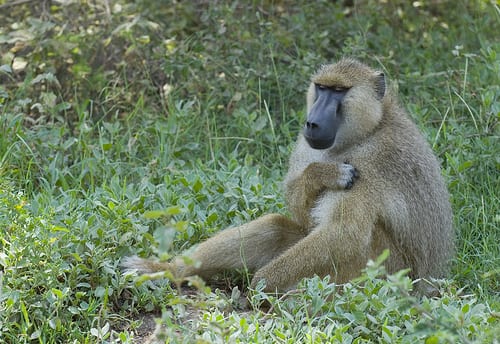
New research says that malaria, a robust evolutionary pressure in humans, has also shaped the baboon genome.
Impact of Malaria
Each year, at least 350 million people around the world are infected by malaria parasites. More than one million people, mainly young children, succumb to the disease.
But these numbers would be even higher if not for genetic adaptations that have evolved in populations living in areas where malaria is a common threat.
For example, populations in Africa, Papua New Guinea, and Brazil carry variations in the DARC gene that protect them from infection by the P.vivax malaria parasite. DARC encodes the Duffy antigen, a protein exploited by P.vivax to enter red blood cells.
Protective Genetic Variants
The protective variations prevent the DARC gene from expressing the Duffy antigen, leaving the parasite without a mode of entry to establish an infection.
Wild baboons are not usually infected by P.vivax or other malarial parasites that affect humans, but they are vulnerable to several closely related species.
In a new report, Duke University researchers show that, like some humans, groups of yellow baboons from Kenya’s Amboseli National Park carry variants affecting DARC gene expression that provide protection against malaria. These findings, published in the journal Nature this week, mark the first time that a genetic variation has been linked to complex traits in a wild non-human primate population.
Malaria Resistance
While the genetic variations that produce P. vivax malaria resistance in humans turn off the DARC gene, the variations that protect baboons from malaria actually increase the amount of protein made from the gene.
This suggests the mechanisms of resistance to malaria infection differ between the two species. Researchers, however, are still impressed with the parallel nature of these evolutionary adaptations.
“It’s a nice example of how — in the vastness of the genome — the same gene was modified in the same way in two different species to produce the same kind of resistance,” Greg Wray, senior author of the report, said. “That’s remarkable when you think of all the different ways malaria resistance might have evolved.”
Gathering the data for this study was no easy feat.
Graduate student Jenny Tung, the lead author of the report, spent three summers in the East African savanna collecting DNA-laden baboon feces and darting animals to take blood samples.
Wray says that the success of her work shows the power of combining fieldwork and genomic analysis. According to him, the next challenge will be understanding how genetic variation contributes to complex behavioral traits like social status and aggression in wild primates.



